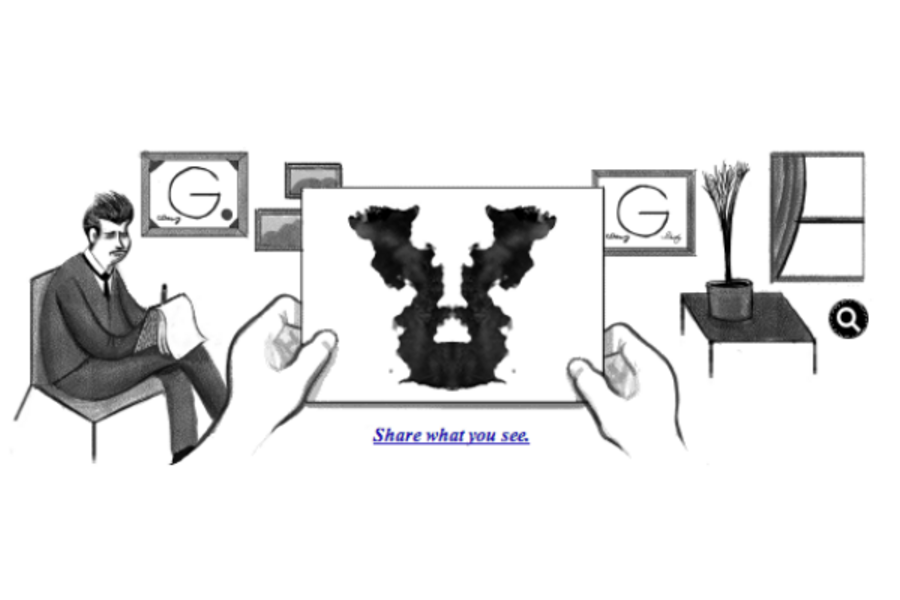Inkblot test pioneer Hermann Rorschach gets a Google Doodle
Loading...
An unusual name can be a curse, but it can also be a blessing - hit a professional highpoint while sporting a memorable, unusual name, and you may attain the sort of immortality enjoyed by psychiatrist and Freudian psychoanalyst Hermann Rorschach.
Mr. Rorschach – probably best known in current culture as "that inkblot guy" – is the subject of today's Google Doodle, recognized for his contribution to the art of personality analysis. Rorschach's method, which has echoed down from his era (the early 20th Century) to our own, is simple enough in theory: show a subject a series of inkblots and see what, if anything, they project onto the images when prompted. In practice, the test is notoriously difficult to "score" – while there are guidelines for how to evaluate answers given for the various pictures, it takes skilled, well-trained interpreters to tease any kind of diagnostic value out of the experience.
Depending upon who you ask, Rorschach tests are either a clever (if somewhat subjective) tool for analysis and detection of underlying thought disorders, or generally a pseudoscientific waste of time akin to cold reading. The test is reasonably easy to administrate, and the fact that it revolves around 10 standard inkblots helps guide those who must interpret the test but can also give crafty subjects a chance to study the blots and the criteria and "cheat" the exam.)
It is, in fact, entirely likely that Rorschach himself would be skeptical of his test as it is often used and interpreted – he didn't intend his test to be a general gauge of personality – he was skeptical of such tests, and developed his inkblot test to diagnose schizophrenia specifically.
The Rorschach doodle puts the pioneering psychoanalyst in good standing among other intellectual honorees from the 20th Century – other Doodles have honored Friedrich Nietzsche, Albert Camus, and Erwin Schrödinger.






